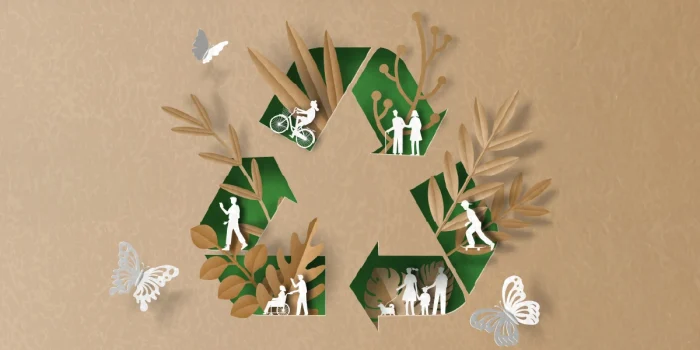Introduction
Every year on November 15, communities across the globe mark National Recycling Day—a reminder that how we manage waste directly affects our environment, economy, and health. Recycling is more than a way to reduce trash; it’s a key part of Sustainable Recycling Practices that conserve energy, prevent pollution, and promote One Health—the interconnection of human, animal, and environmental well-being.
As waste generation grows, so does our responsibility to rethink how materials are produced, used, and reused. Through smarter systems, cleaner technologies, and shared global commitment, recycling can evolve from a household routine into a cornerstone of planetary health.
How can we turn everyday recycling into a truly sustainable global movement?
The Global Waste Challenge
According to the United Nations Environment Programme (UNEP), the world produces over 2 billion tons of municipal solid waste each year, and at least one-third is not managed in an environmentally safe manner [1]. When waste is burned or dumped, it releases pollutants that contaminate air, soil, and water—impacting ecosystems and public health alike.
Unregulated landfills release methane, a greenhouse gas nearly 80 times more potent than carbon dioxide, and open burning emits toxic particles that contribute to respiratory and cardiovascular disease. By contrast, recycling materials like aluminum, glass, and paper saves up to 95% of the energy required to manufacture them from raw resources [2]. That means fewer emissions, reduced deforestation, and less pressure on fragile ecosystems already stressed by climate change.
Recycling is not just an environmental solution—it’s an economic one. A circular recycling industry creates green jobs, fosters sustainable markets, and reduces dependency on finite raw materials. Every ton of recycled material strengthens the link between economic resilience and environmental responsibility.
Health and Environmental Benefits
Recycling benefits more than the planet—it directly safeguards human health.
Improper disposal of electronic and plastic waste releases heavy metals and toxins that seep into water supplies and accumulate in food chains. Safe recycling programs prevent this contamination, reducing human exposure to carcinogens and neurotoxins [3].
In densely populated regions, landfill overflow increases pest and disease transmission. Recycling minimizes these risks by cutting the waste volume that ends up in dumps or incinerators. Cleaner environments reduce chronic respiratory conditions, promote mental well-being, and enhance community pride.
Moreover, reducing waste production supports climate resilience—a public health imperative. Cleaner air, safer food, and healthier neighborhoods are not luxuries; they are the direct outcome of responsible recycling behavior and sustainable urban planning.
Key Steps Toward Sustainable Recycling Practices
- Reduce and Reuse: The best waste is the one never created. Choose reusable containers, repair before replacing, and prioritize minimal packaging.
- Sort Correctly: Contamination ruins entire batches of recyclables. Always follow local guidelines and avoid mixing materials.
- Support Innovation: Opt for products made from recycled or biodegradable materials. Encourage circular product design across industries.
- Leverage Technology: Artificial intelligence and smart waste-tracking systems make recycling faster, safer, and more transparent [2,3].
- Engage Communities: Education campaigns, school programs, and partnerships empower citizens to participate meaningfully.
Together, these practices form the backbone of a circular economy—where materials are continuously reused rather than discarded.
A One Health Perspective
From polluted rivers to microplastics in seafood, waste mismanagement threatens both ecosystems and human health. The One Health approach emphasizes that environmental protection is also disease prevention [4].
When we recycle sustainably, we not only conserve energy but also reduce the drivers of chronic illnesses, limit carbon emissions, and preserve biodiversity. Cleaner environments support healthier livestock, safer food chains, and more stable ecosystems—benefiting all life on Earth.
In this sense, Sustainable Recycling Practices are not just environmental choices—they are vital public health strategies for a resilient future.
Conclusion
On this National Recycling Day, let’s view recycling not as a duty, but as a shared investment in the planet’s health. Each bottle, can, or newspaper recycled contributes to cleaner air, safer water, and stronger communities.
Through innovation, education, and collaboration, we can turn waste into opportunity—building a future where sustainability supports both health and hope.
Recycling is more than an environmental act. It’s a public health commitment and a defining step toward a cleaner, healthier, and more sustainable world.
References
- United Nations Environment Programme (UNEP), 2024. Global Waste Management Outlook 2024: Beyond an Age of Waste – Turning Rubbish into a Resource. Nairobi: UNEP/International Solid Waste Association. Available at: https://wedocs.unep.org/20.500.11822/44939
- Organisation for Economic Co-operation and Development (OECD), 2025. Leveraging Digital Business Models, Tools and Technologies for Reliable Environmental Information and Consumer Engagement in the Circular Economy. OECD Digital Economy Papers No. 377. Available at: https://www.oecd.org/en/publications/leveraging-digital-business-models-tools-and-technologies-for-reliable-environmental-information-and-consumer-engagement-in-the-circular-economy_33c6e2bc-en.html
- Li, Y., Wang, J. and Shen, B., 2023. Driving circular economy through digital technologies: Current status and future trends. Sustainability, 15(24), p.16608. https://doi:10.3390/su152416608
- Geissdoerfer, M., Savaget, P., Bocken, N.M.P. and Hultink, E.J., 2017. The circular economy – A new sustainability paradigm? Journal of Cleaner Production, 143, pp.757–768. https://www.sciencedirect.com/science/article/abs/pii/S0959652616321
023













